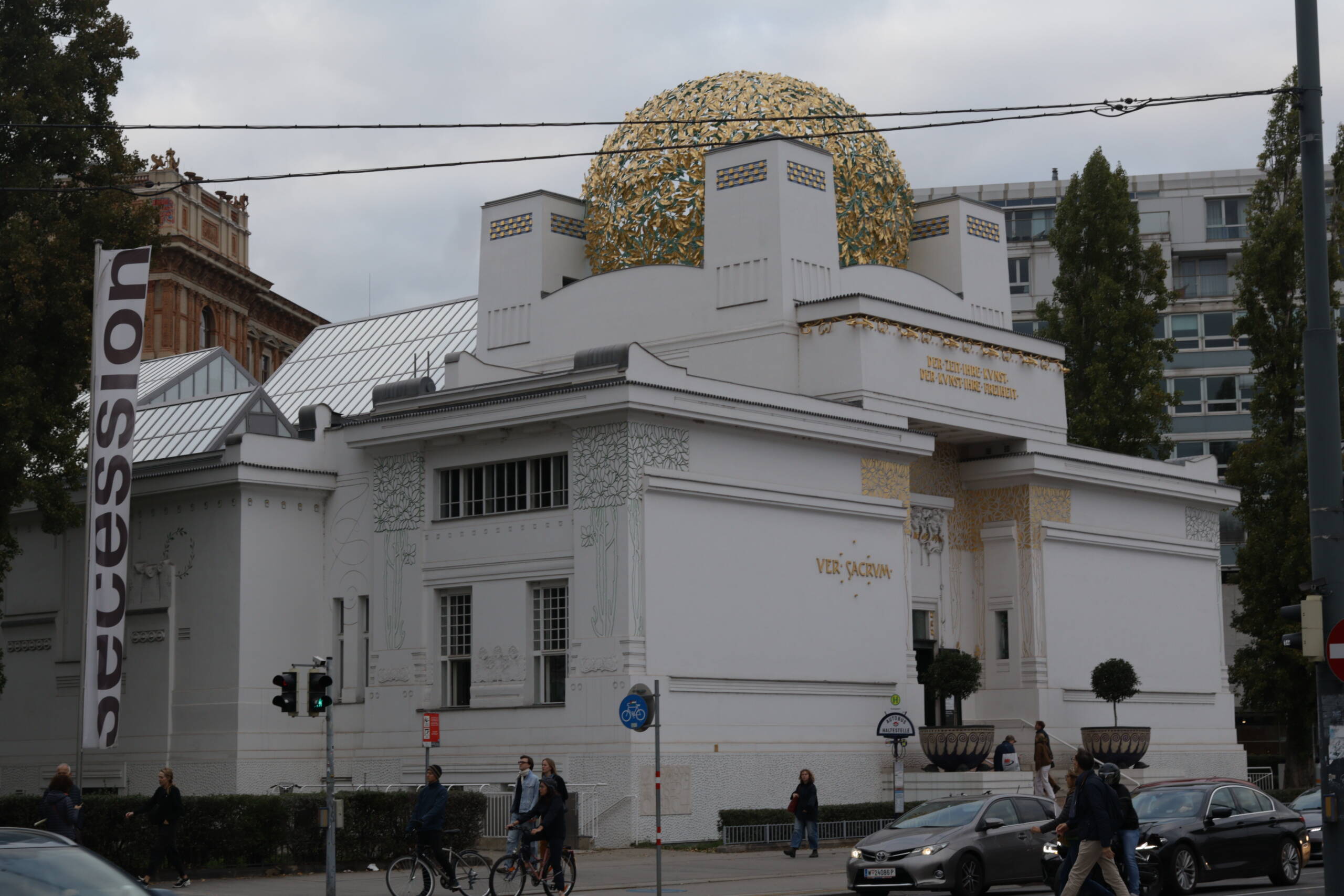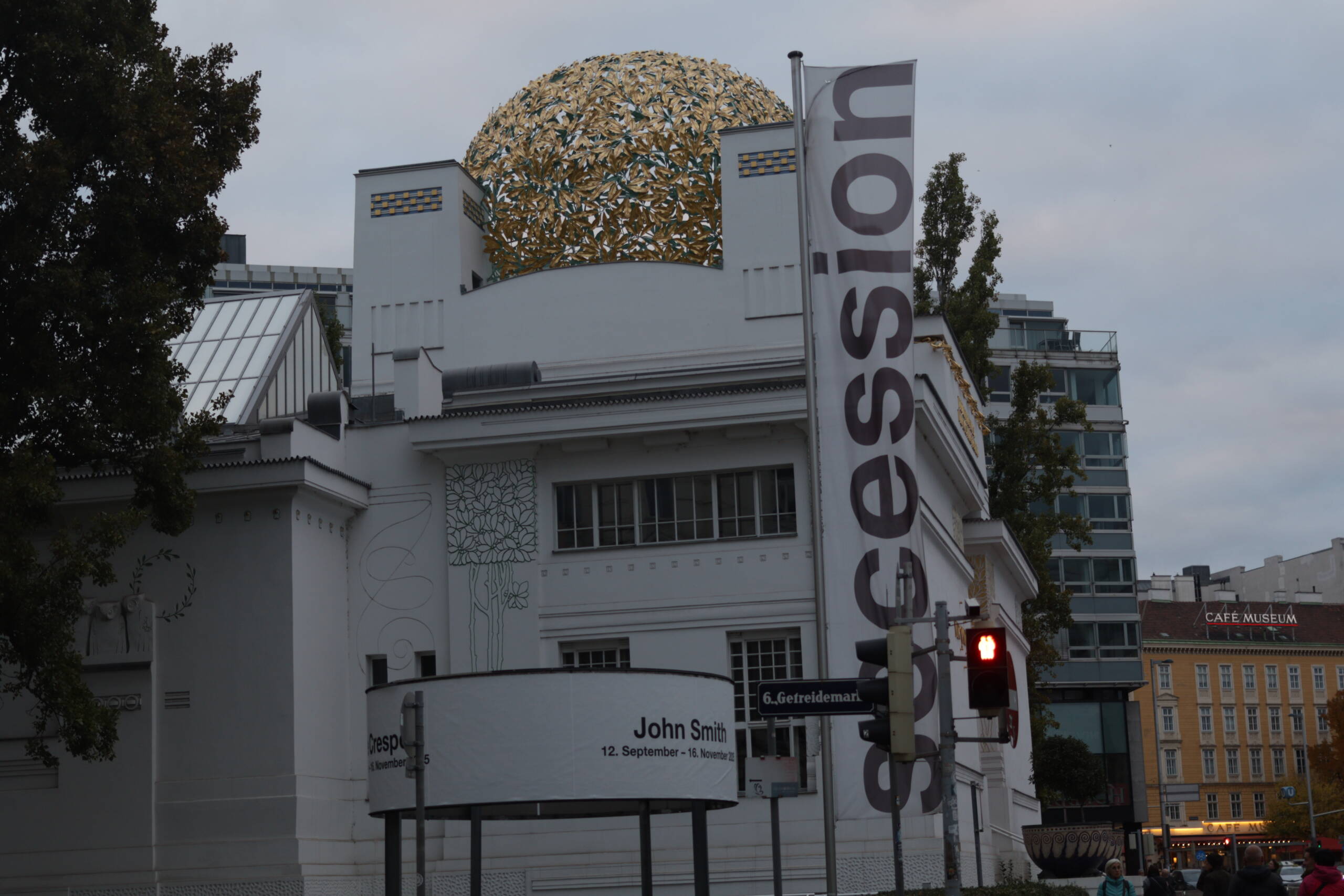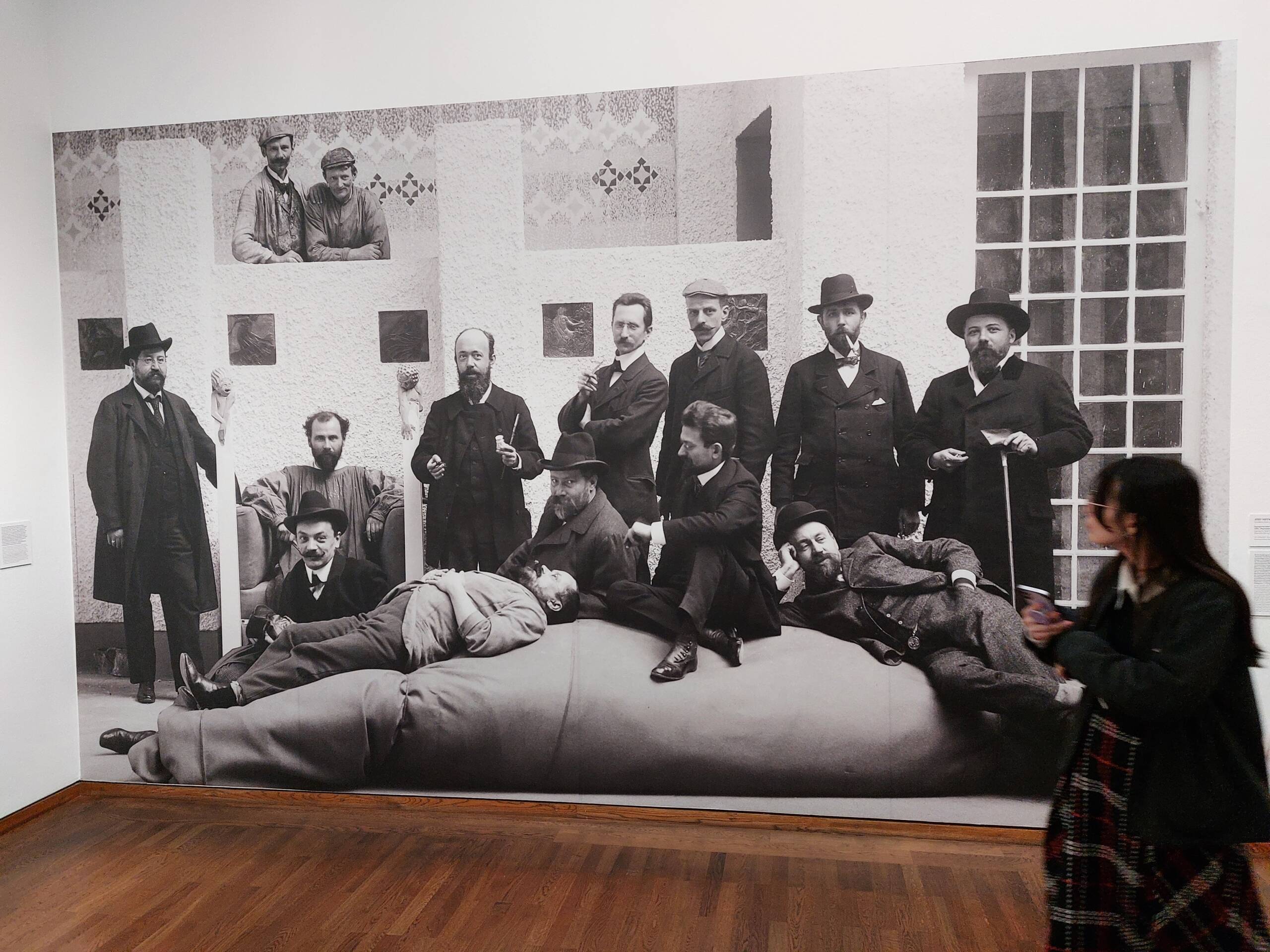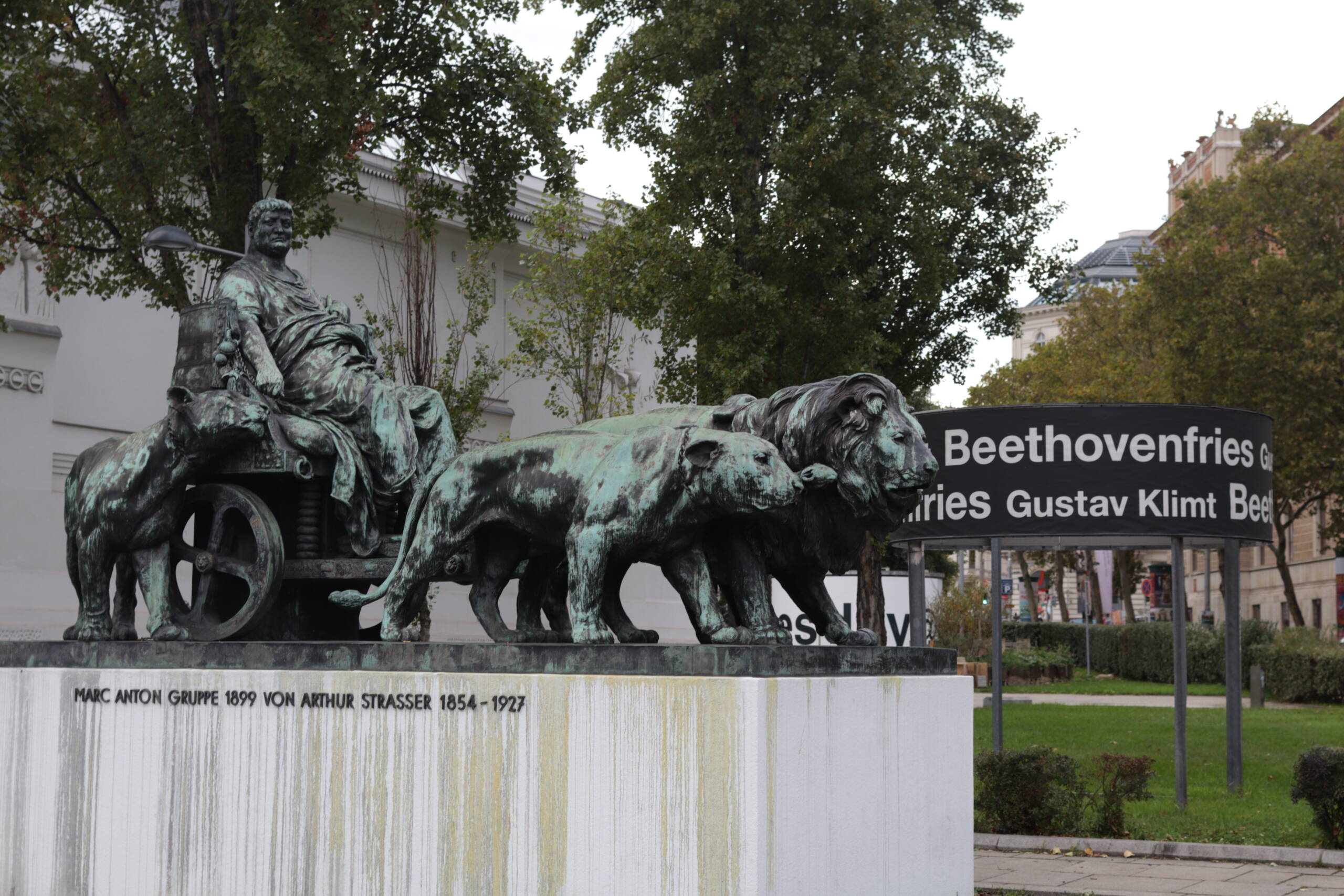When one approaches the story of the Vienna Secession, one is immediately confronted with a paradox. On the one hand, the Secession was born of rupture—an artistic rebellion against the conservative Künstlerhaus and the rigid traditions of the Viennese art establishment. On the other hand, the very same movement has become one of the most iconic and enduring symbols of Vienna, its building a protected monument, its artists canonized, its motto etched in gold across history books. What began as an act of secession became, in its own way, the establishment. But in between lies a fascinating history of personalities, aesthetics, ideologies, and conflicts that still reverberate through modern art and design.


The large black-and-white photograph inside the Secession is one of the most evocative entry points into this story. Taken in 1902 by the photographer Duchâteau, it depicts members of the Secession gathered in a casual, almost theatrical arrangement. Some sit, some stand, some recline, one lies across what looks like a beanbag cushion. This informality is itself striking: whereas academic portraits of artists’ guilds or official societies would show their members in stiff rows, here the Secessionists stage themselves as equals, as conspirators, as men at ease with their modernity. In this photograph we see Gustav Klimt, the president of the Secession, seated confidently; Josef Hoffmann, soon to become one of the most influential architects and designers of the Wiener Werkstätte; Koloman Moser, painter and graphic artist, co-founder of the Werkstätte; Carl Moll, painter and stepfather of Alma Mahler; Josef Maria Olbrich, the young architect of the Secession building; Max Kurzweil, painter and illustrator; Wilhelm Bernatzik, painter and founding member; and others whose names are less known today but who were central to the circle. The photograph thus becomes a manifesto in itself. These are not anonymous painters and designers; these are men who knew they were changing art, and who presented themselves as such.

The Secession building itself, designed by Josef Maria Olbrich and completed in 1898, is the true symbol of the movement. Located just off the Karlsplatz in Vienna, it stands in stark contrast to the heavy Ringstrasse architecture of the late 19th century. Where the Kunsthistorisches Museum or the Burgtheater display neo-Renaissance or neo-Baroque grandeur, the Secession offers white walls, flat surfaces, stylized floral ornament, and sharp geometry. It was a shock to contemporaries, a visual rupture from the imperial taste for historicist styles. Above it rises the most famous feature: the gilded dome of laurel leaves, constructed from 3,000 individual gilt-iron elements. Viennese critics quickly nicknamed it der goldene Krauthappel—the golden cabbage. Yet its symbolism is profound: laurel is the ancient symbol of victory, here reimagined as an abstract sphere. Victory not of empire but of art, not of armies but of imagination.
Two inscriptions define the building’s ideological core. On the façade one reads: Der Zeit ihre Kunst, der Kunst ihre Freiheit—“To every age its art, to every art its freedom.” This motto, penned by critic Ludwig Hevesi, encapsulates the Secessionist creed: art must be relevant to its own time and liberated from external constraints. On the side wall another phrase appears: Ver Sacrum—“Sacred Spring.” This was also the title of the Secession’s journal, edited by Max Kurzweil and Koloman Moser, which served as a laboratory for new design in typography, graphic art, and literature. Inside, the galleries were designed to be adaptable, capable of transformation for each exhibition. This flexibility was itself a break from the rigid salon format of traditional art institutions. It turned the building into a space of experimentation, a stage for the Gesamtkunstwerk.
Outside the Secession, the bronze group of Marc Anton on a chariot drawn by lions, created by sculptor Arthur Strasser in 1899, adds a striking counterpoint. Here we see the language of 19th-century monumental sculpture: Roman generals, allegories of power, heavy naturalism, heroic scale. Yet when viewed against the background of the Secession building, the contrast is almost theatrical. The old and the new stand side by side: Strasser’s imperial allegory and Olbrich’s modernist experiment. This juxtaposition makes visible what was at stake in 1900 Vienna. The Secessionists were not anarchists; they did not seek to destroy tradition. But they insisted on moving beyond it, on creating art appropriate to their time.

To understand why the Secession mattered, we must situate it within the ferment of Vienna at the fin de siècle. The empire was a patchwork of nationalities, its political system strained by competing demands. Yet Vienna itself was booming: new urban projects, the Ringstrasse with its monumental buildings, the expansion of middle-class culture. At the same time, intellectual life was restless. Sigmund Freud was publishing The Interpretation of Dreams (1900), introducing psychoanalysis and unsettling the bourgeois confidence in rationality. Karl Kraus was launching his satirical journal Die Fackel, skewering hypocrisy and corruption. Arnold Schoenberg was experimenting with new musical forms that would soon shatter tonality. In this environment, the Secession was part of a larger questioning: what is the role of art in a rapidly changing world?
The Secession also intersected with issues of gender. Women artists, though excluded from official membership, participated in exhibitions and contributed to Ver Sacrum. The movement’s emphasis on design and the applied arts opened space for women as designers of textiles, posters, and decorative arts. Figures such as Emilie Flöge, Klimt’s lifelong companion and a fashion designer, embodied the spirit of Gesamtkunstwerk in clothing.
The Vienna Secession was part of a broader European wave of artistic experimentation. In France, Art Nouveau flourished in the designs of Hector Guimard, whose Paris Métro entrances transformed ironwork into organic curves. In Belgium, Victor Horta built sinuous townhouses in Brussels. In Germany, Jugendstil (named after the Munich journal Die Jugend) offered parallel experiments, visible in the work of Peter Behrens and others. In Britain, the Arts and Crafts Movement led by William Morris emphasized craftsmanship, honesty of materials, and the unity of art and life. The Secession shared affinities with all of these, yet retained its own character. Where French Art Nouveau emphasized curvilinear plant forms, the Vienna Secession tended toward geometric abstraction. Where Arts and Crafts romanticized medieval craft, the Secession embraced modernity and industrial techniques. Their uniqueness lay in the synthesis: ornament distilled into geometry, myth reimagined through psychology, and architecture treated as the skeleton of a Gesamtkunstwerk.
The high point of the Secession’s influence came with the 14th exhibition in 1902, dedicated to Beethoven. The Secessionists saw Beethoven, especially through the lens of Wagner’s interpretation, as the heroic artist who embodied the union of music, art, and spiritual striving. The exhibition included a full-scale plaster model of Max Klinger’s monumental Beethoven statue, architectural framing by Hoffmann and Olbrich, and the crowning achievement: Gustav Klimt’s Beethovenfries.
The Beethovenfries, painted directly onto the walls in casein and gold leaf, stretches over 34 meters. It is not a literal depiction of Beethoven’s Ninth but an allegorical journey: humanity’s longing for happiness, the hostile forces that oppose it, the arts that mediate salvation, and the final union in joy. On the left, emaciated figures symbolize human suffering. In the center, monstrous beings represent the forces of evil—Typhoeus, the giant with serpent hair, flanked by his daughters, the Gorgons. Klimt’s figures here are grotesque, sensual, simultaneously terrifying and alluring. To the right, floating female figures embody the arts: Poetry, Music, Dance. Finally, the choir of angels and the embracing lovers represent the overcoming of struggle through art and love, echoing Schiller’s “Ode to Joy.”
The Beethovenfries is both decorative and deeply psychological. Its figures shimmer in pale tones, its surfaces are studded with ornament that resists narrative. At the time it scandalized many viewers with its eroticism and abstraction. Today it is recognized as one of the masterpieces of Symbolism and Secessionist art.
Despite its achievements, the Secession was not immune to conflict. By 1905, divisions had emerged between Klimt and his circle and the more conservative members. Klimt, Hoffmann, and Moser resigned, frustrated by disputes over the role of art and commerce. This schism marked the end of the Secession’s first and most radical phase. Yet the ideals lived on. Hoffmann and Moser founded the Wiener Werkstätte in 1903, applying Secessionist principles to furniture, textiles, jewelry, and household objects. Otto Wagner continued to shape Vienna’s architecture with his visionary modernism. Klimt continued his career, producing iconic works such as The Kiss (1907–08). And younger artists like Egon Schiele and Oskar Kokoschka carried the psychological intensity of Viennese modernism into the next generation.
Walking around the building today, one is struck by how well the Secession continues to hold its own in the urban landscape. Modern traffic swirls around it, office buildings loom behind it, but the white walls and golden dome still shine as a beacon. Tourists photograph it, students sketch it, locals pass by with barely a glance, but the motto remains: Der Zeit ihre Kunst, der Kunst ihre Freiheit. It is perhaps ironic that what was once so radical is now heritage, but this too is part of the Secession’s legacy. Their revolution became the new tradition. Their challenge to artistic authority is now enshrined in textbooks. Yet the building still asks uncomfortable questions. What is the art of our age? Do we grant it freedom? Or are we still clinging to safe, commodified versions of creativity?
The Vienna Secession was more than an architectural style or an artist group. It was a cultural manifesto, born in a city of contradictions—imperial yet modern, conservative yet radical, gilded yet restless. Its leading figures—Klimt, Hoffmann, Olbrich, Moser, Wagner, Moll, Kurzweil, Bernatzik, Orlik, Hevesi—forged a vision in which art was not confined to canvases but permeated every aspect of life. The Secession building remains their greatest symbol. From the monumental group portrait of its members to the bronze lions of Strasser, from the gold dome to the Beethovenfries, it is a site where past and present meet. The visitor walking through its halls today is not simply looking at history but participating in an ongoing dialogue about the role of art in society.
The golden cabbage gleams not just as ornament but as a reminder of rebellion transformed into tradition. Every age must find its art; every art must claim its freedom. The Secession, over a century later, continues to remind us of this truth.
Leave a Reply